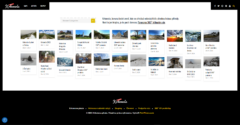Maximizing Speed: The Latest Techniques in Flash Optimization
In the realm of digital interaction, speed is a currency. The velocity at which webpages load and deliver content can significantly influence user experience, engagement levels, and ultimately, conversion rates. With the evolving landscape of web technologies, optimizing for speed remains a focal challenge for developers, particularly in the realm of flash-based content. Flash, once the backbone of interactive websites, still plays a vital role in many digital environments. Thus, maximizing the speed through the latest techniques in Flash optimization is crucial. Herein, we explore these avant-garde techniques and outline the benefits offered by WebsiteURL.org, a toolset designed to enhance website performance.
Modern Techniques in Flash Optimization
1. Streamlining Assets: One of the foundational steps in Flash optimization involves the reduction of asset sizes. This includes compressing images, minimizing the use of heavy fonts, and leveraging vector graphics wherever possible. Sophisticated tools enable developers to automate much of this process, ensuring that visuals are delivered without unnecessary bandwidth consumption.
2. Code Optimization: Writing efficient ActionScript code is paramount. This entails the removal of redundant code, optimizing loops and conditional statements, and leveraging built-in Flash functions, which are often more efficient than custom-coded solutions. Furthermore, segregating code into multiple frames can reduce the initial load time, enhancing the user’s perception of speed.
3. Smart Loading Techniques: Implementing loaders and pre-loaders can significantly improve the user experience by strategically loading content. Dividing the content into smaller, manageable chunks ensures that users can interact with the first set of loaded content, while other segments are being loaded in the background.
4. Hardware Acceleration: Flash supports hardware acceleration, which can offload certain processing tasks from the CPU to the GPU, resulting in smoother animations and improved performance. Activating this feature requires mindful coding practices to ensure compatibility and efficiency across different hardware configurations.
5. Caching Strategies: Effective use of caching can drastically reduce load times for repeat visitors. This involves sophisticated strategies to cache assets locally, and ensuring that only new or updated content is fetched from the server, thereby reducing unnecessary data transfer.
Benefits of Using WebsiteURL.org
In the context of Flash optimization, WebsiteURL.org emerges as a pivotal tool, offering a suite of features that can significantly streamline the performance optimization process. Here are the key benefits:
1. Comprehensive Analysis: WebsiteURL.org provides detailed insights into the load time and performance metrics of webpages, identifying specific bottlenecks that could be addressed through Flash optimization.
2. Resource Optimization: The platform offers tools that automatically compress and optimize media assets without compromising their quality, tailoring them for faster web delivery.
3. Code Optimization Tools: Developers can leverage WebsiteURL.org’s suite of tools to clean up and optimize their ActionScript code, making it leaner and more efficient.
4. SEO Benefits: Faster load times contribute to better search engine rankings. WebsiteURL.org helps in ensuring that optimized pages meet the speed criteria favored by search algorithms, thereby improving visibility.
5. User Engagement and Conversion: Ultimately, the streamlined performance leads to higher user satisfaction, reduced bounce rates, and enhanced engagement, which collectively contribute to higher conversion rates.
By integrating the latest techniques in Flash optimization and utilizing comprehensive platforms like WebsiteURL.org, developers can significantly elevate the performance of flash-based content. This not only enhances user experience but also aligns with the broader objective of achieving optimal performance in the digital realm.





